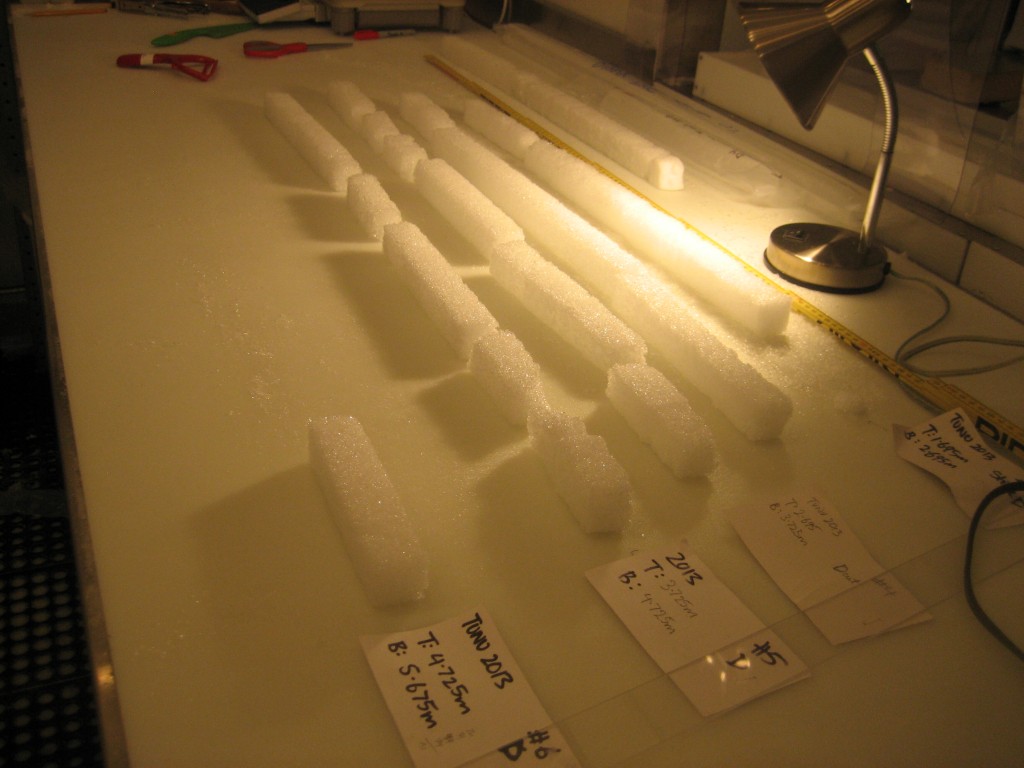In May 2013 a group of 4 researchers from the Desert Research Institute (DRI) in Reno, Nevada and Oregon State University, travelled to the far north east of the Greenland ice sheet and spent 3 weeks at the remote site in order to drill two adjacent ice cores. The site name, Tunu, translates as 'East' or 'Backside' in Greenlandic at its location (78N, 33E) is marked only by a nearby solitary automatic weather station ~200 km inland at an altitude of ~2000 m. The purpose of the drill campaign was to collect an ice core that went back to 2000 years b.p. at a low snow accumulation, high Arctic site - time permitted that we were also able to drill a second, replicate core just 3 meters away.
Temporal records of aerosol concentrations archived in the ice sheet are dependent upon the air masses that move over the site. At Tunu, air masses typically move from northern Europe over the North Atlantic and carry with them proxies of increased industrialization such as toxic heavy metals or soot as well as indicators of more local climatic conditions such as sea ice extent or sea surface temperatures. Once these aerosols are deposited on the ice sheet they can influence its physical properties by, for example, decreasing the albedo at the ice surface or even affecting the structure of the ice matrix itself. Comparison of the aerosol and greenhouse gas records from the Tunu ice cores with records from an array of other Greenlandic ice cores will give us insight into if and how the aerosol concentrations preserved in the ice effect the preservation of the gases in the ice.
The drill campaign at Tunu was a very successful one. Led by Beth Bergeron (Ice Drilling Design and Operations) two great quality 4-inch cores were dry drilled to depths of 213 and 143 meters, with only a one-day hiatus due to bad weather. Obtaining ice cores that are free from drill fluid contamination was an essential part of this study as the presence of drilling fluid can easily compromise the measurement of Total Organic Carbon (TOC) as well as affecting the performance of the other non-organic ultra trace instruments that are used to analyze the ice core.
The cores were shuttled to the USA via Basler aircraft, NSF's C130 Hercules and finally two refrigerated trucks and arrived at NICL in July where they were promptly cut into meter long sticks ready for analysis. The measurement of the Tunu cores was performed at the Ultra-trace Chemistry Lab at DRI and was complete by mid-August. The cores were analyzed in a rapid, high temporal resolution, continuous melt technique where both aerosols and gases trapped in the ice are measured simultaneously. The fact that the cores were freshly drilled with no drill fluid and were in great condition has resulted in a spectacular 2000 year record of from the high Arctic location. Processing of the ice core records is now underway, and is already revealing the complex relationship between aerosol and gas records and their preservation in the ice sheet.
A detailed account of the field campaign as well as the recently completed analysis campaign can be found at our blog http://icecores.blogs.dri.edu/.

